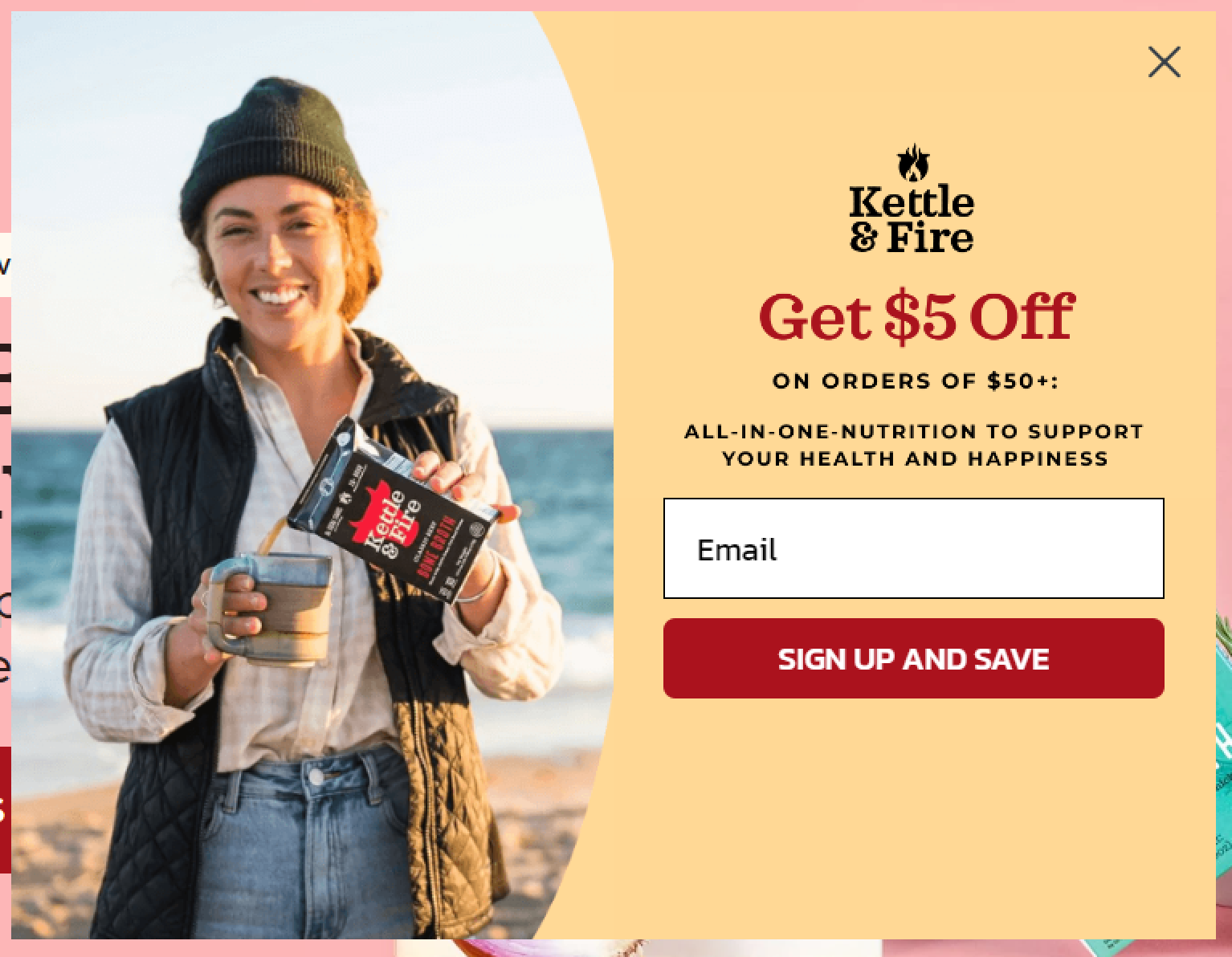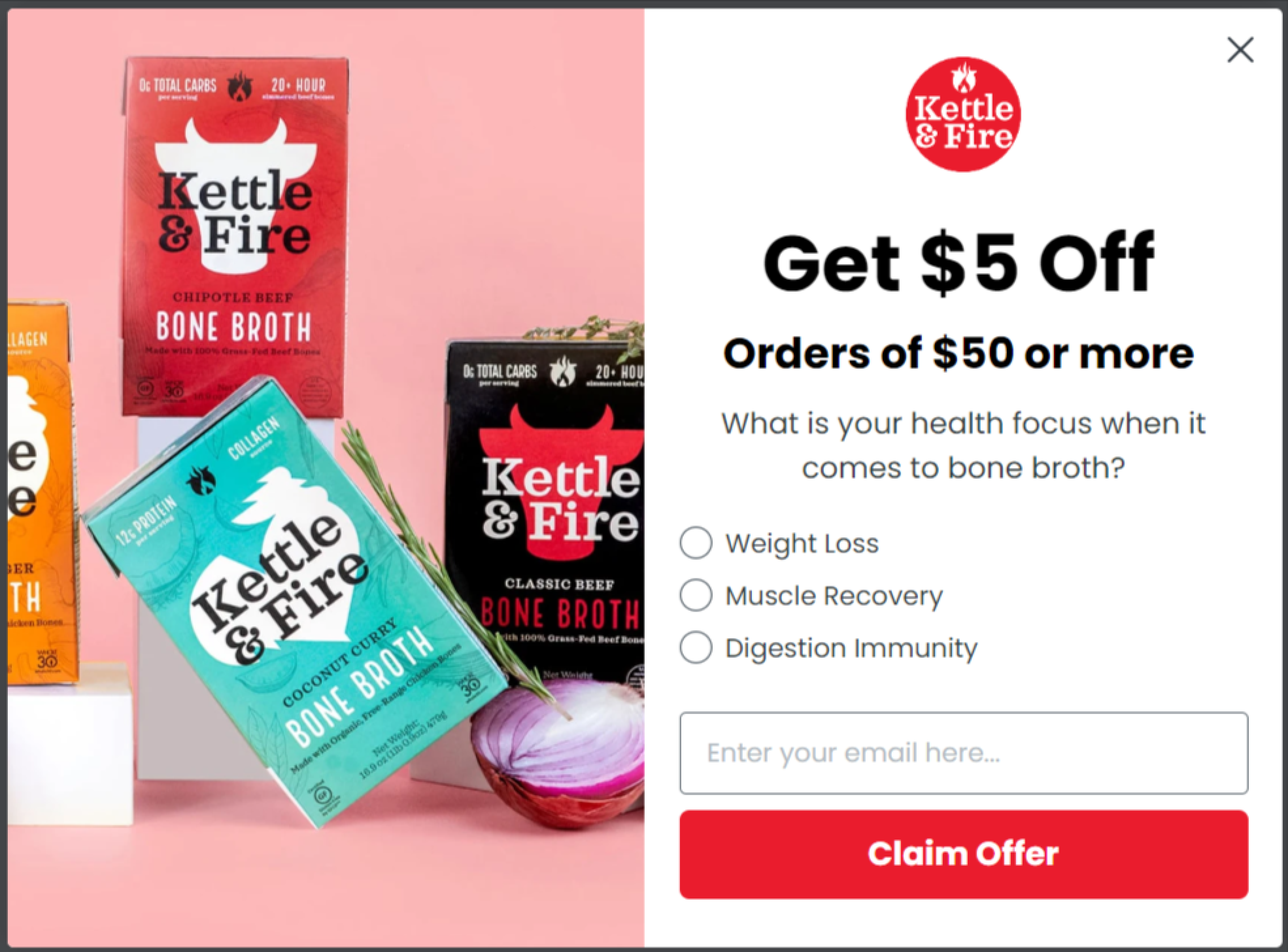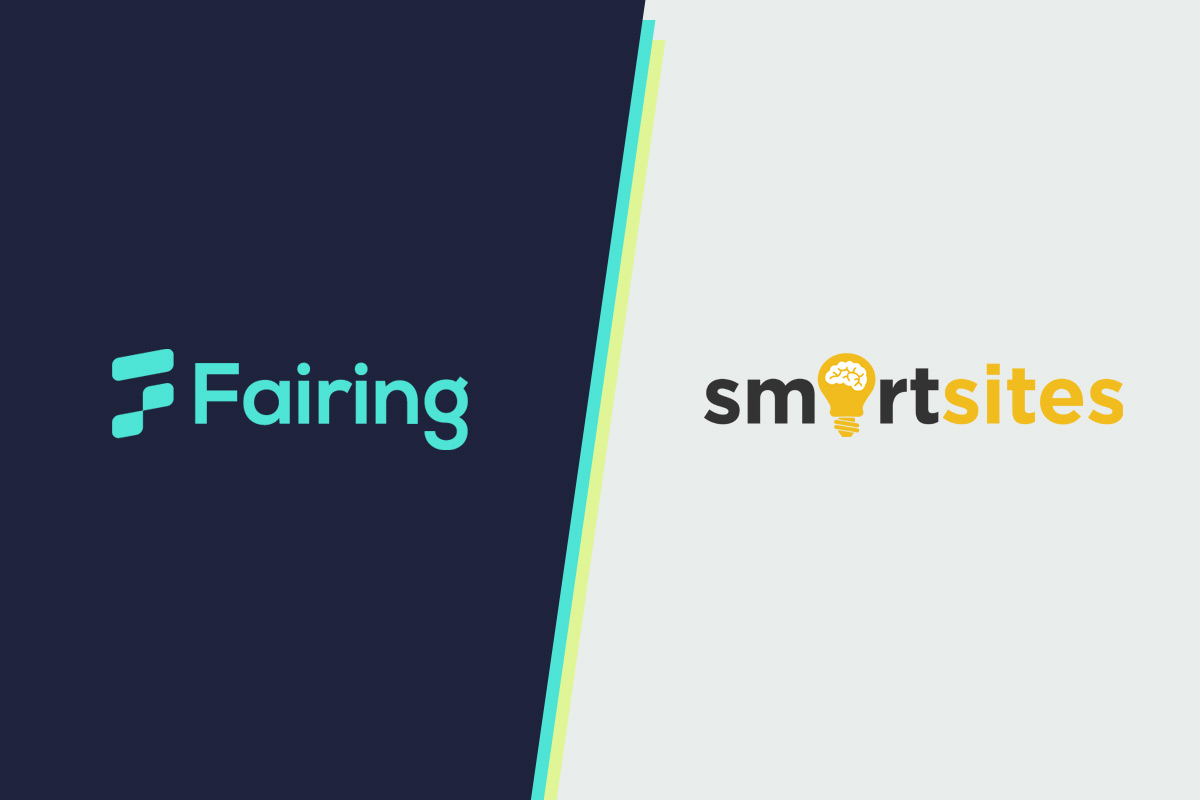Integrating An Effective Zero-Party Data Strategy With Your Email Marketing (From Opt-In To Post-Purchase)

This is a partner guest article by Dalton James from SmartSites. Learn more about SmartSites here.
Over the past six years, we have seen data privacy laws and restrictions becoming ever more prevalent. Last year, Google announced they would be disabling the use of 3rd party cookies within Chrome. In 2021, the year email marketers were convinced the sky was falling, we saw IDFA opt out by default and Mail Protection Privacy introduced through iOS 15.
Despite these new road blocks, we have seen brands in the eCommerce space who have managed to not only come through unscathed, but thrive in the face of these new restrictions.
How are they doing it? Through implementing an effective Zero-Party Data strategy with email marketing.
As a quick refresher, Zero-Party Data is information your subscribers and customers have willingly and proactively shared with you. Caught up to speed? Great, let’s dive in and learn how to thoughtfully incorporate a Zero-Party Data strategy into your email marketing.
Step 1: Understanding The Zero-Party Data You Want To Collect
Understanding the Zero-Party Data you want to collect will come down to your brand's goals. Do you want to send new subscribers more relevant content? Are you trying to convert more prospective customers on the front end? Are you trying to increase first-time customer AOV?
We’re going to be using the popular bone broth brand Kettle & Fire for our examples throughout this blog post.
Kettle & Fire offers seventeen different flavors of bone broth, they have seven categories for these flavors, and they group their broth into three separate “Health Focuses”.
We could take a number of approaches when collecting Zero-Party Data for them, such as:
- Asking potential subscribers their Health Focus on their sign-up form.
- Asking potential and current subscribers if they are on a special diet.
- Asking potential subscribers if they are interested in drinking K&F broth, cooking with it, or if they’re more interested in their bone broth soups.
These are just a handful of examples, and there are so many more approaches we can take, but hopefully this is getting your creative juices flowing.
Step 2: How To Collect Zero-Party Data
Once you’ve honed in on the kind of Zero-Party Data you want to collect, implementing a strategy to collect that data becomes much easier. We will be focusing on the two most popular ways to collect Zero-Party Data from new and current email subscribers.
1) Sign Up Forms
Sign-up forms are the tried-and-true method of collecting one of the most common forms of Zero-Party Data from your site visitors; their email address.
Continuing with our Kettle & Fire example, let’s imagine that we want to learn what our potential subscribers' health focus is. Once we learn this information, we will be able to present our subscribers with tailored promotions, product offerings, and content to provide a better experience for them.
Currently, Kettle & Fire is only asking site visitors for their email address on their sign-up form.

Creating a new sign up form to collect the kind of Zero-Party Data we need can be as simple as creating a new form within Klaviyo.

Radio buttons are the perfect way to add multiple options to your sign-up form while keeping the process relatively frictionless for your visitors. To avoid impacting your submission rates, aim to only ask 2-5 questions on this form and make it a non-required field.
Keep reading as we’ll go more in-depth on how to utilize this data in your automated flows and email campaigns below.
2) Surveys
Surveys are an excellent, yet highly under-utilized way to gather Zero-Party Data from your current subscribers.
Many brands struggle to figure out what kind of content their subscribers prefer, what promotions they should send, how often they should email them, etc. Sometimes, it’s really as simple as asking them.
Fairing’s Question Stream™ serves brands incredibly well with surveys in mind. Many brands will see up to a 20% improvement in attribution data the moment they launch their post-purchase survey.
Step 3: Now That You’ve Collected Your Zero-Party Data, How Do You Use It?
You’ve collected your Zero-Party Data, now what? The most logical step would be to personalize your automated Welcome Series with the information your subscriber provided on your sign-up form.
This flow typically produces the highest amount of revenue for most eCommerce brands, so using customer data effectively can be the difference between making an extra five to six figures a year (or more) depending upon the size of your brand.
Welcome Series:
Let’s take a look at the first email in Kettle & Fire’s Welcome Series.
It presents the reader with their opt-in discount and an immediate call-to-action, gives a bit of information on what Kettle & Fire is all about (good vibes, better wellness, no-fillers, no-nonsense broths) and doesn’t overload the reader with too much information all at once.

Straight-forward, to the point, and I’m sure it works tremendously well for them. But, what if we were to curate this email based on our new subscriber’s preferences they shared with us on our mock sign-up form?
Imagine that our new subscriber self-segmented by choosing the ‘weight loss’ health focus on our sign-up form. Clicking through Kettle & Fire’s site, we can see that four kinds of bone broth are advertised under this category.
If K&F was looking for a quick and painless approach to using Zero-Party Data, they could simply plug these four products into their Welcome Series’ first email and say “Hey, we noticed you were interested in weight loss! Here are our best-selling bone broths formulated to help you shed those unwanted pounds”.
Now, if they wanted to dive deeper, they could restructure the entire email so that it is tailored toward their customer persona that is looking to lose weight.
Repeat this process with the remaining health focuses on their site and Kettle & Fire is on their way to building out an effective Zero-Party Data strategy.
Post-Purchase Flow:
Collecting and utilizing Zero-Party Data doesn’t stop at the first sale. Having a post-purchase flow in place that not only uses, but collects Zero-Party Data is an effective way to increase your customer’s lifetime value (LTV) and turn them into raving fans of your brand.
How can we do this?
1) Send your customers relevant post-purchase content
Running with our Kettle & Fire example, let’s say our new customer purchased two bone broths from our weight loss category.
Rather than simply adding them to your engaged customer segment and calling it quits, let brainstorm some campaign ideas that would be more relevant to the customer, and more effective in generating additional revenue.
- Teach your customer how to use your new product by sending them your favorite bone broth weight loss recipes
- Share your favorite Kettle & Fire weight loss transformations to build a community of buyers with the same goal
- Send this customer targeted promotions and incentives when they are about to run out of broth so they can continue their weight loss journey
- Asking potential subscribers their Health Focus on their sign-up form
Here is an example of an excellent Kettle & Fire email campaign that subtly targets women on their list who may be interested in weight loss by promoting their guide to intermittent fasting.

2) Send targeted promotions to your list
My favorite use case of Zero-Party Data is being able to send highly targeted promotions to anyone who has shared Zero-Party Data with us.
Sending your list the standard 10% - 15% off discounts from time to time certainly works for some brands, but you can only do it so many times until the strategy becomes predictable and ineffective
In our example, if a subscriber or customer shared that they were interested in bone broth for weight loss, we can tailor each interaction they have with Kettle & Fire. This includes the way they perceive our brand through sales and discounts.
Let’s say a customer made their first purchase with them, but never reordered after they finished their first 30-day bone broth supply.
Instead of sending them standard newsletter content, hoping they will place a second order, Kettle & Fire can tip the odds in their favor by sending them a campaign tailored to them.
Since they never placed an order after they finished their initial supply, K&F needs to address the concerns this customer may be having in their campaign.
They may be thinking:
- “I didn’t see results after the first 30 days”
- “I love your broth, but it’s too expensive”
- “Remembering to order each month is too annoying”
In this case, K&F can do the following:
- Let customers know how long it typically takes to see results and share community stories that backup their claims.
- Show customers why their broth is worth every penny, from how it’s made to the amount per serving they get vs other brands, etc.
- Include a relevant incentive so they place their second order. A dollar amount with free shipping is often effective in converting first time customers again.
- Mention your subscription option that includes a monthly 20% off discount.
These are a few quick examples, but understanding your customer’s concerns and addressing them effectively can be the difference from them churning and placing a second order with you.
3) Quizzes and Surveys
Quizzes and surveys are where many of us first learned about Zero-Party Data.
Quizzes are the perfect way to engage first-time visitors and guide them to a product that will best fit their needs if you have a larger catalog of products or multiple categories. Paired with an incentive at the end of their quiz, this can be an incredibly powerful way to boost conversions if you’re looking to try something different than a standard email sign-up form.
Surveys are just as valuable, but will be used more heavily in your post-purchase flow and email campaigns.
Sending new customers a survey after they purchase from you is the perfect way to gather key information from a highly engaged portion of your audience.
You can ask your customers various questions such as:
- Where did you hear about our brand?
- Why did you choose to buy from us?
- Were you considering any other brands over us?
- Are you satisfied with your order? If not, why?
- If yes, what are the top three things you love about your new purchase?
- What did you love and hate about your customer experience with us?
There are so many more questions we can ask, but it’s important to remember that you need to ask specific questions based on your brand’s marketing goals and strategy.
Email Campaigns
Email campaigns are an essential piece of your marketing puzzle and will heavily benefit from the use of Zero-Party Data. There are a few ways you can effectively integrate a Zero-Party Data strategy with your email campaigns.
Personalization
I hate to break it to everyone, but using Klaviyo’s `` variable just doesn’t cut it anymore when it comes to personalization. Consumers know you’re not actually typing an email specifically to them and their expectations when it comes to a personalized experience have been raised considerably in recent years.
This is where list segmentation and tagging comes into play.
Tags can be used to assign certain variables to a customer profile, such as what flow they are currently in, what products or product categories they have purchased, if they have placed more than one order with you, etc.
Your segments are where you will aggregate these individuals into a group of similar customers so that you can send each subscriber personalized content.
Imagine you are sending an email to Kettle & Fire’s 90-day engaged subscribers who have never placed an order and noted that they were interested in weight loss on K&F’s sign-up form.
Since these subscribers did not purchase with Kettle & Fire’s welcome offer, we will need to re-engage them with the weight loss benefits of bone broth, additional benefits they may not be aware of, and potentially a special incentive or limited time deal to push them over the edge so they convert.
Now, Kettle & Fire can repeat this process for their weight loss and digestion immunity health focuses with some minor tweaks to these campaigns to adapt this strategy across a larger portion of their list.
The idea here is to figure out who your subscriber is, why they haven’t purchased, give them the information they need to make an informed purchase, and finally present them with a strong CTA or incentive to convert.
Zero-Party Data is a powerful tool, one that we will see more brands adopt throughout 2023 and going into 2024. Collecting Zero-Party Data isn’t just about revenue, it’s about creating a unique and lasting customer experience. Email marketing, and tools like Question Stream™ , are a highly effective way to implement this kind of strategy for your own brand. We challenge you to take a look at the examples above and choose just one to kick off your own brand’s Zero-Party Data strategy. Report back to us once you have, we would love to hear about the success you’ve had in implementing these tips!
Want to learn how to set up your post-purchase survey for your brand? Read more here.





